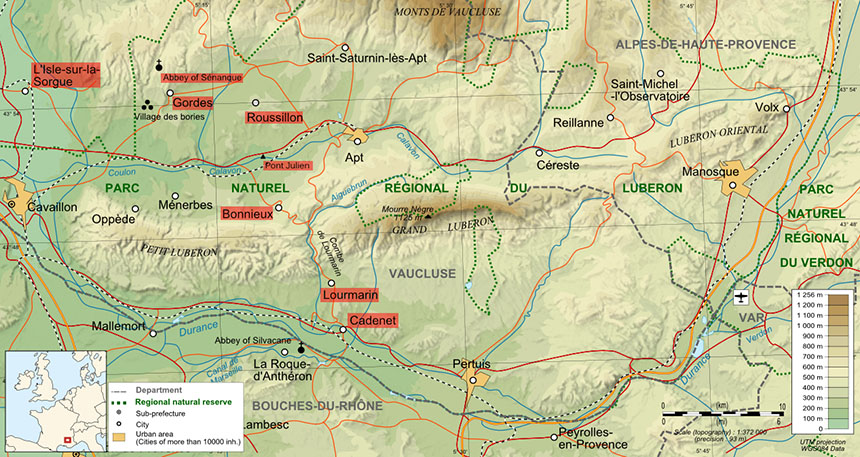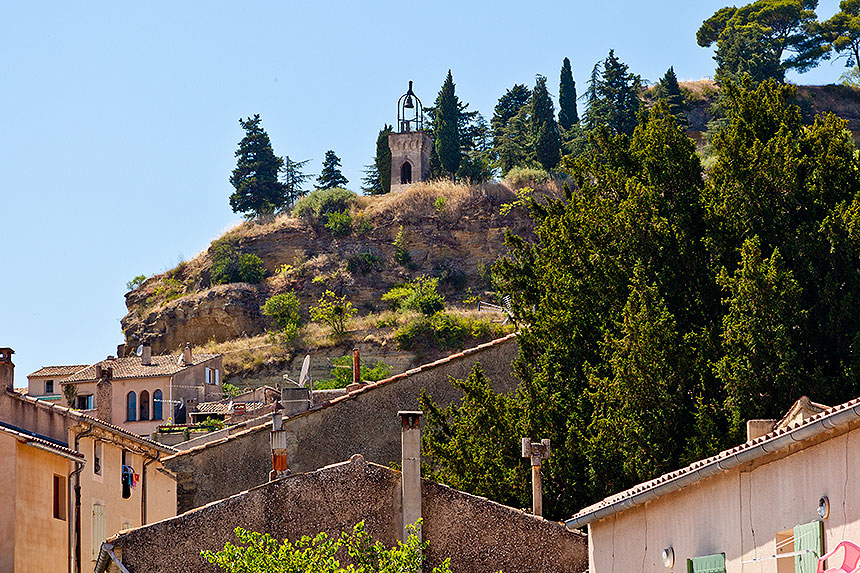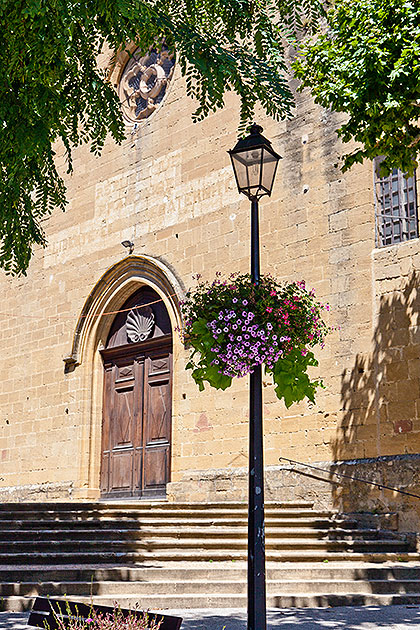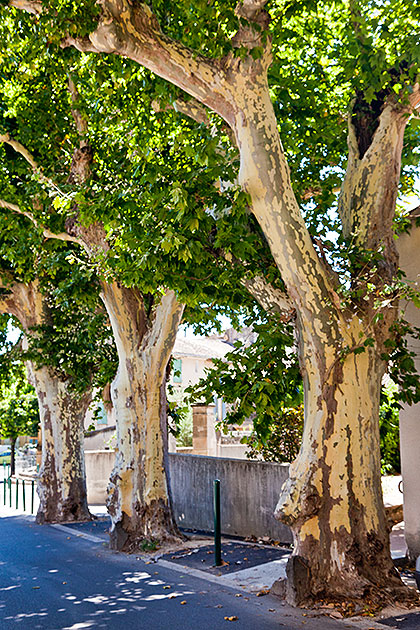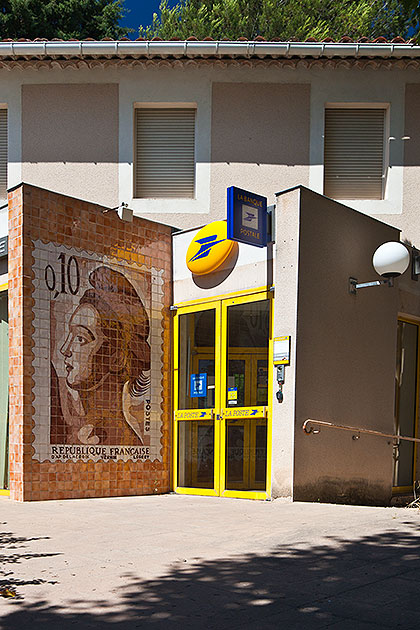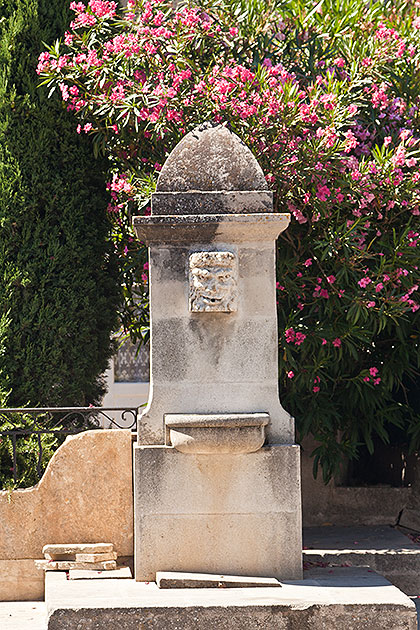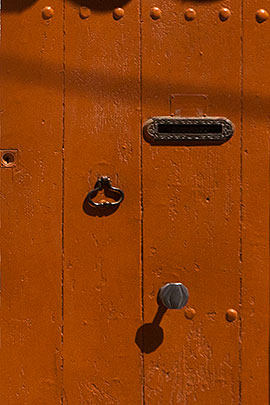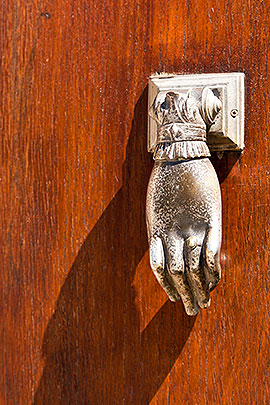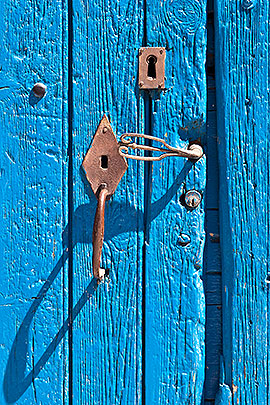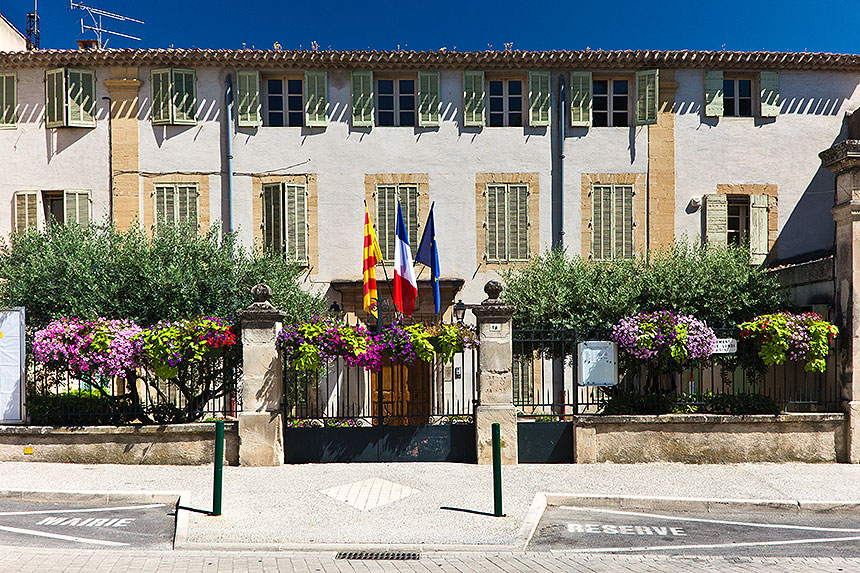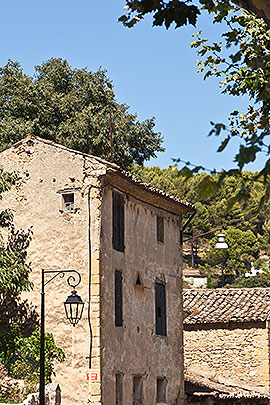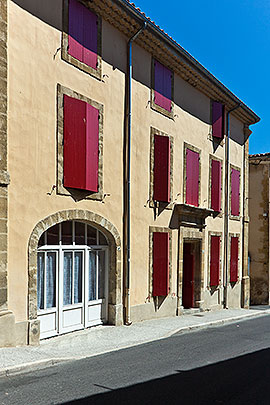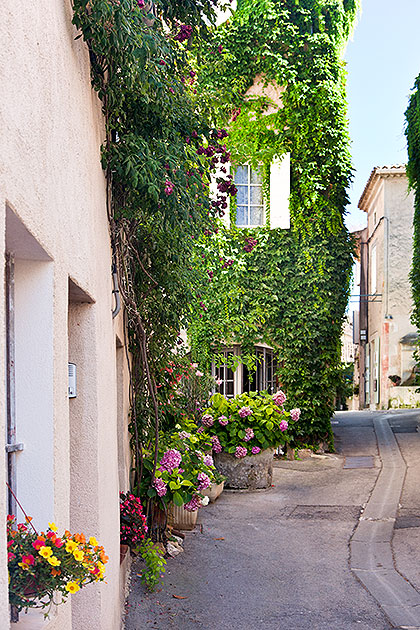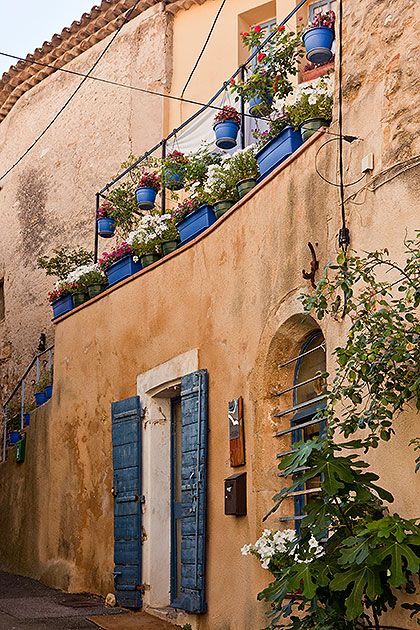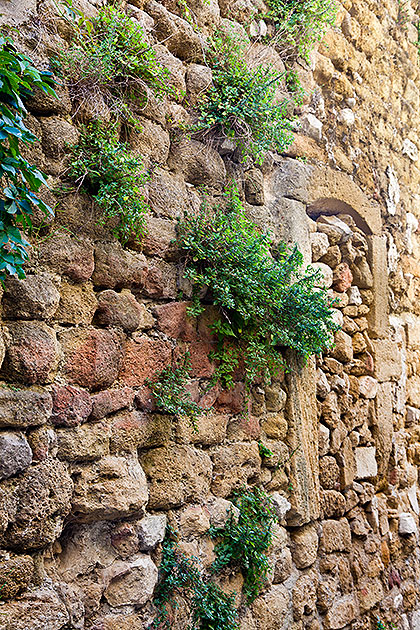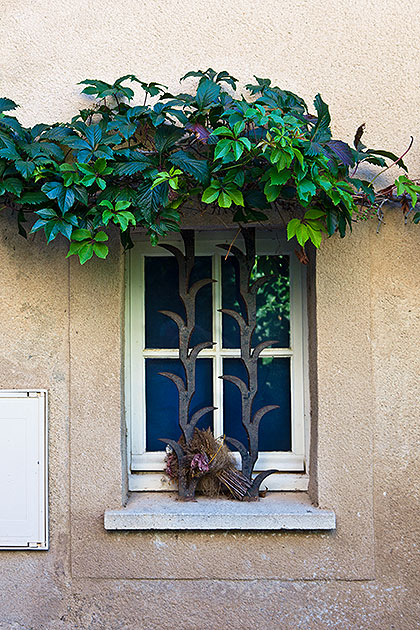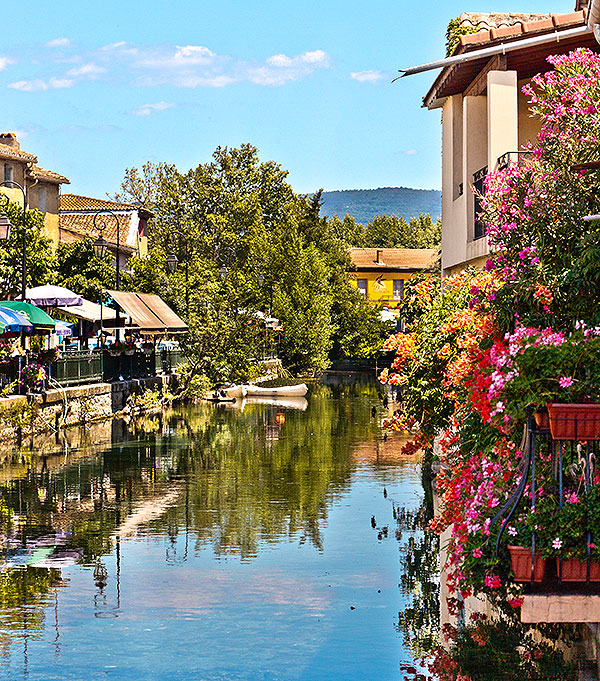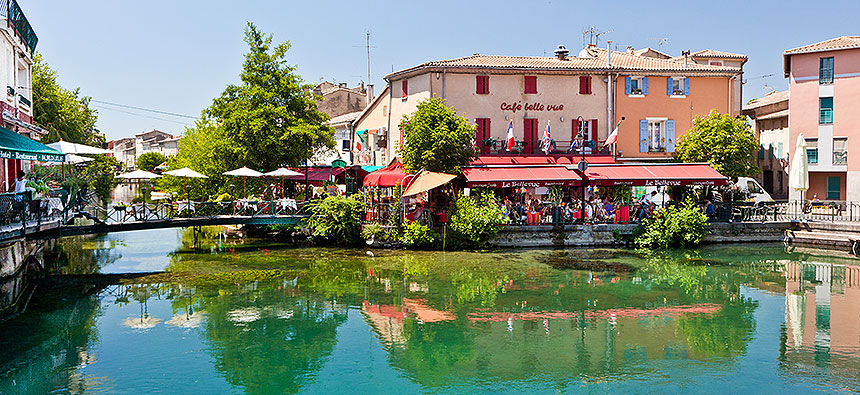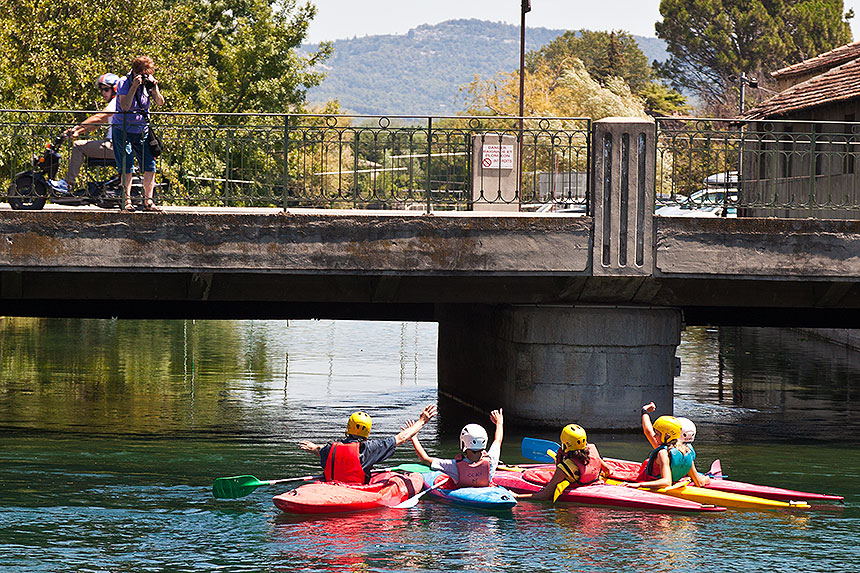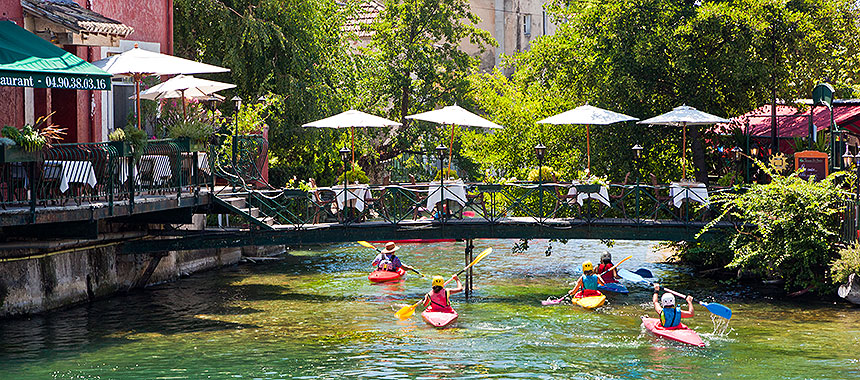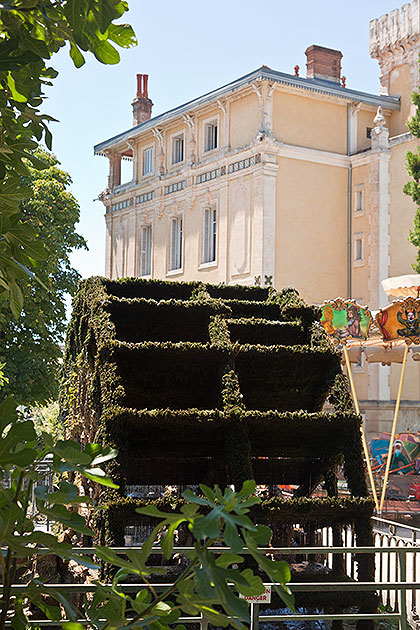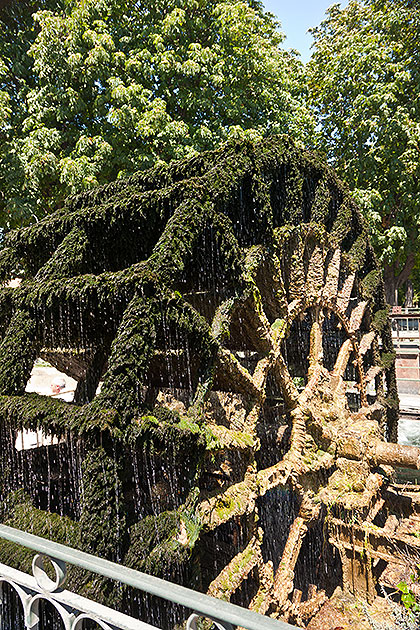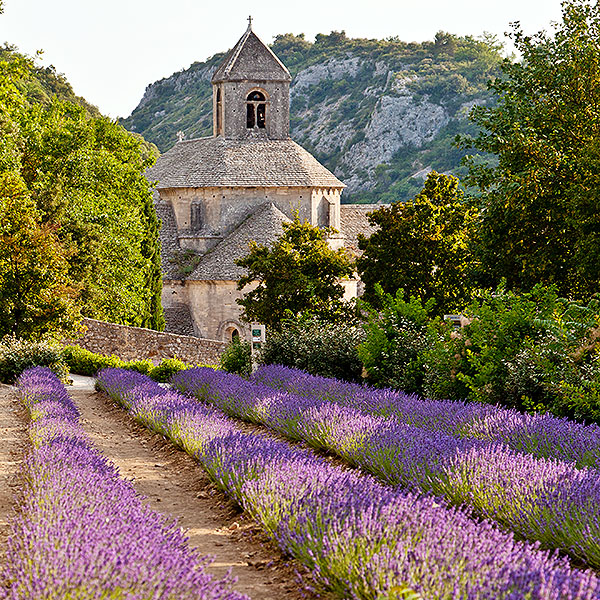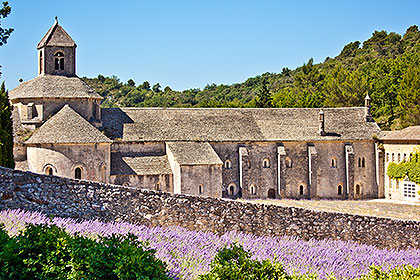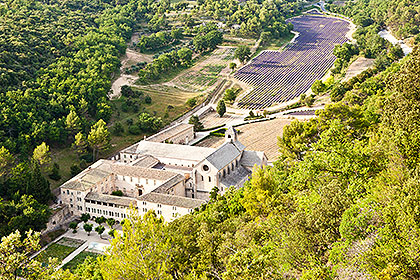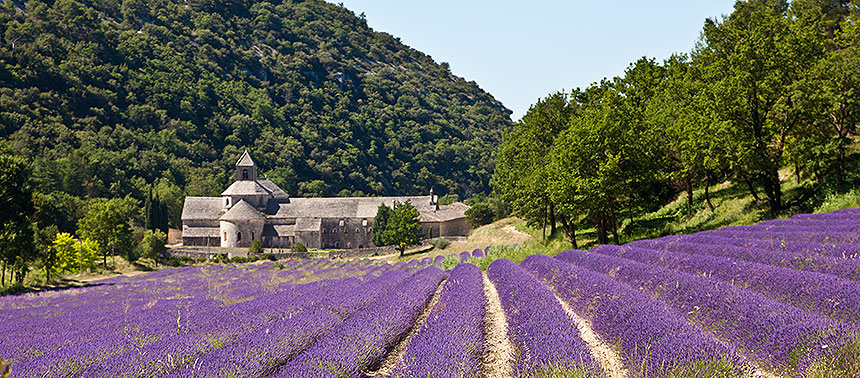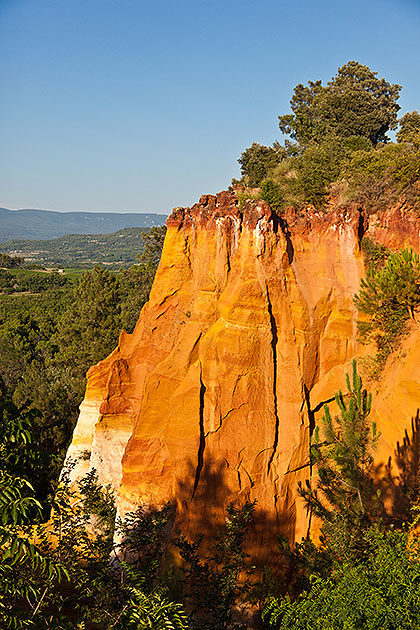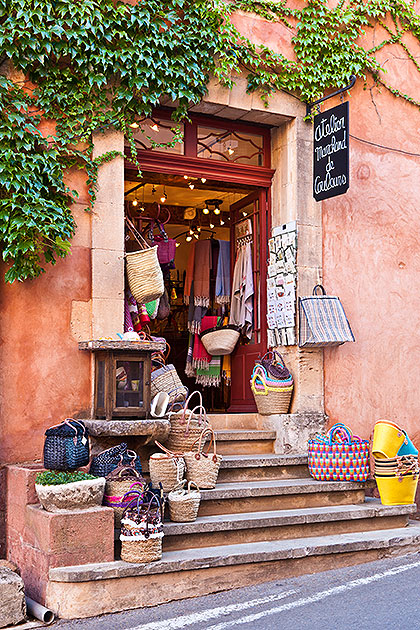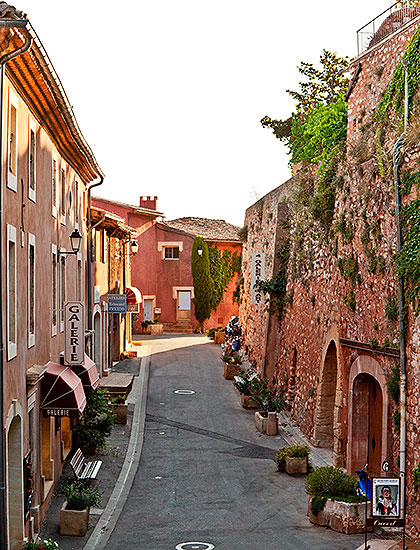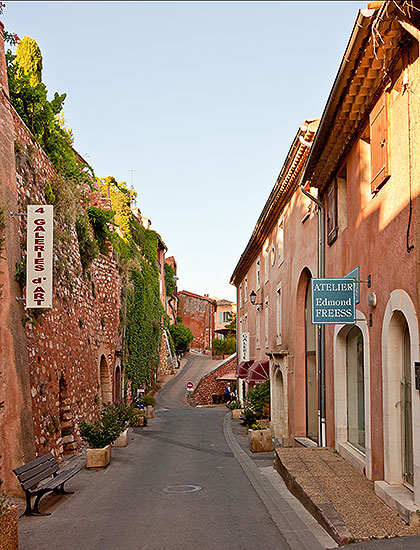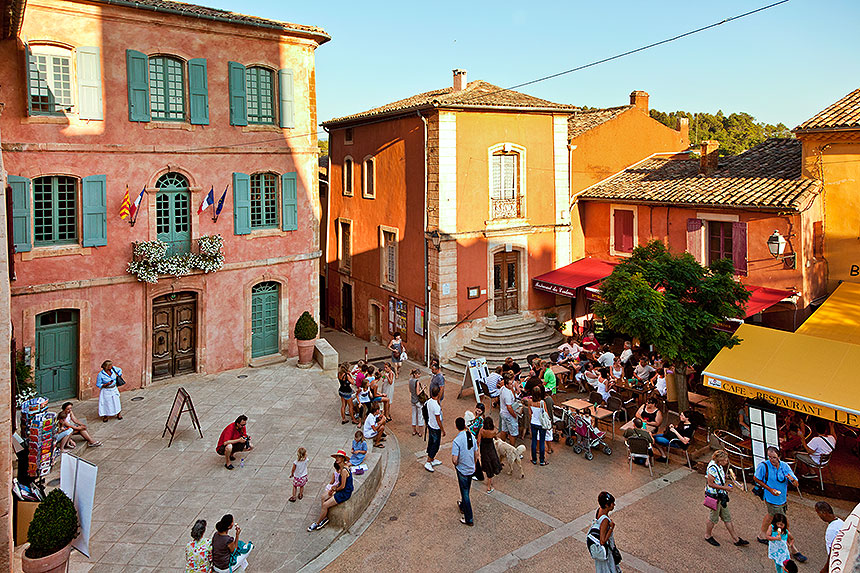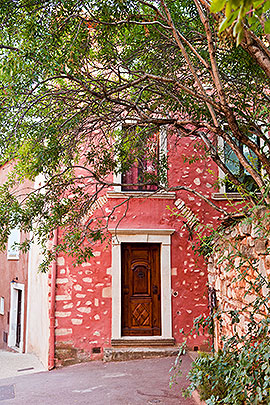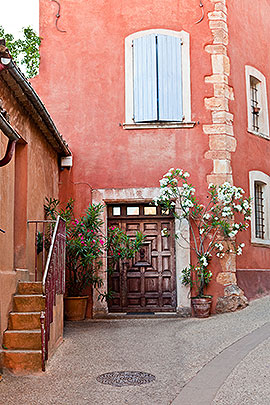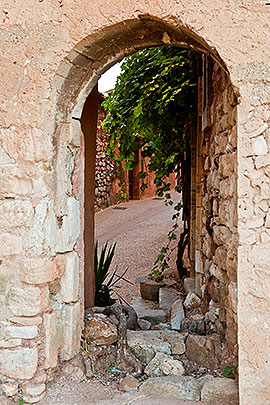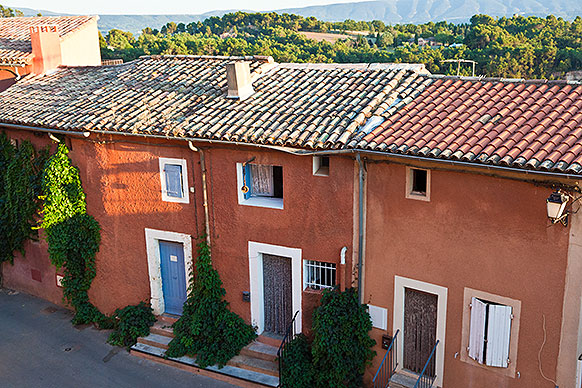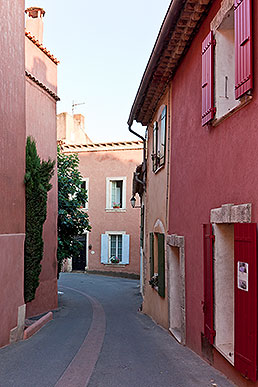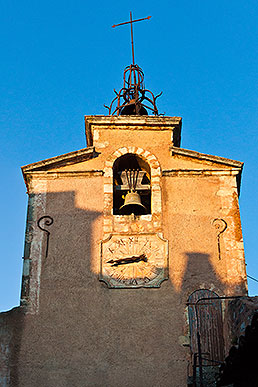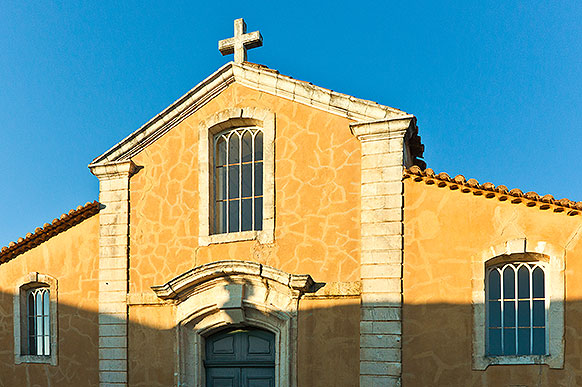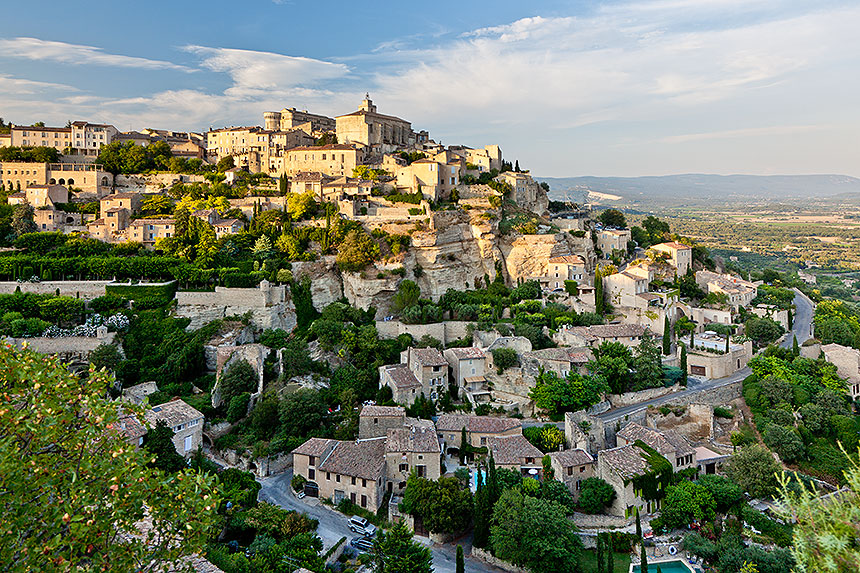Gordes and Vicinity: Colorful Villages in the Heart of Provence
Our first base of operations is near the village of Gordes, in the the western part of the Luberon region of Provence. For this first segment of our tour we will explore the nearby villages of Cadenet, Lourmarin, L'Isle-sur-la-Sorgue, Bonnieux and Roussillon, as well as the Senanque Abbey and Pont Julien. This part of Provence has been popularized by the writings of Peter Mayle.

First morning light reaches the village of Gordes, on the edge of the Plateau de Vaucluse. We are staying at a country estate in the valley below.
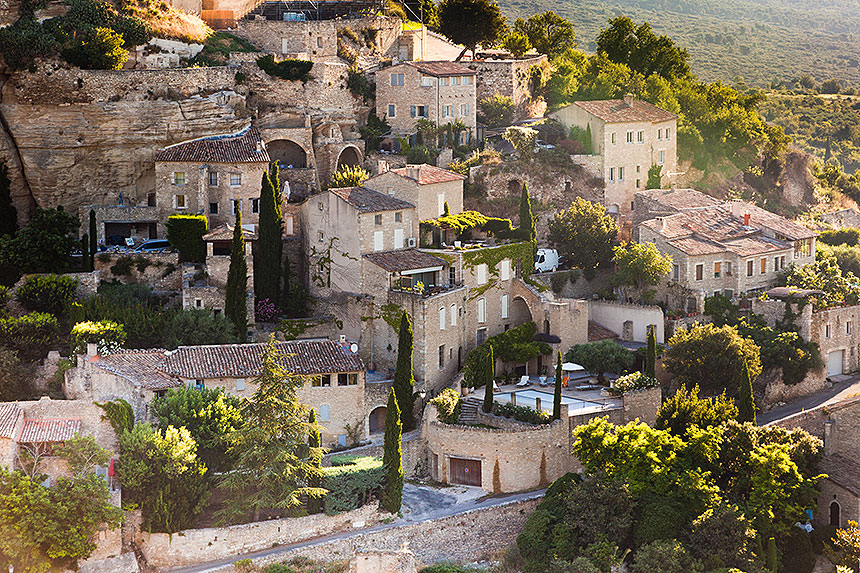
Hotels and private residences mingle with ancient walls and cliff side fortifications. Gordes' popularity as an artist colony and vacation spot results in summer crowds and congested streets, so we avoid entering the village in favor of visiting other less crowded villages in its vicinity.
Cadenet
It's difficult to get large unobstructed views of this ancient village, so we look instead for charm, oddities and architectural details.
Lourmarin
L'Isle-sur-la-Sorgue
This village on the Sorgue surrounds its crystal-clear river with flowers and cafes.
Some young kayakers wave to Linda before departing upstream.
One of the few remaining water wheels recalls the history of L'Isle-sur-la-Sorgue as a mill town.
Abbaye de Senanque
The 12th Century Senanque Abbey is known both for its graceful form and its setting in a narrow valley surrounded by fields of lavender.
The abbey is constructed entirely of limestone, following a simple design with no decoration, within or without.
It peaked in importance and wealth in the 13th to 14th Centuries, after which it went into a gradual decline over the next several centuries. It was sacked during the 16th Century Wars of Religion, nationalized after the French Revolution, and later sold into private ownership. It was repurchased for religious use in the 19th Century, but fell into disuse again in the early 20th Century. A small group of monks returned in 1988 and continue to maintain and operate the abbey today.
Major restorations in the 1860s and again in the 1980s have revived the structure and maintained its function without alteration to its original design.
The monks of the abbey maintain the fields, sell some produce and tend hives of honeybees for their livelihood.
Bonnieux and Pont Julien
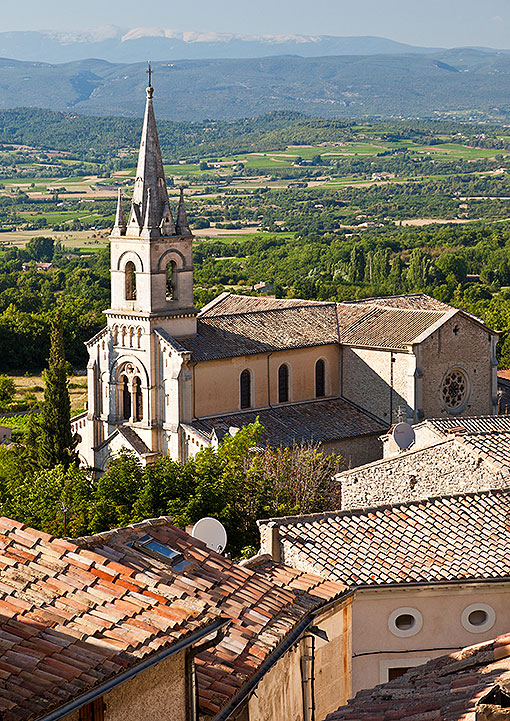
On our way to Roussillon, we make a brief stop for a view of the graceful 'Eglise Bas' church, at the lower edge of Bonnieux village.
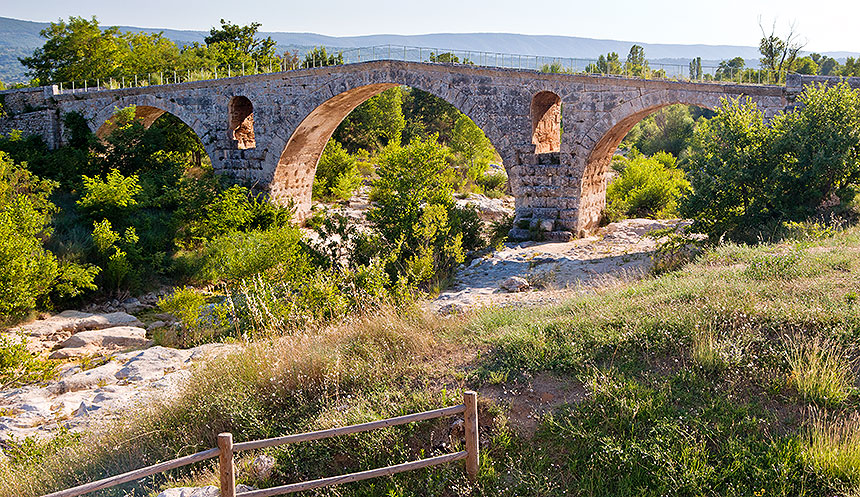
Then we make another stop at the magnificent 'Pont Julien', which spans the Calavon River. This triple-span Roman bridge, dating from 3BC, was still in use as a highway bridge until a new bridge was constructed in 2005. We wonder if the modern one will last 2,000 years.
Roussillon
The cliff shown below declares the presence of ochre in the rock and clay around the village of Roussillon. Quarries near Roussillon mined large quantities of the soil pigment, mainly for the textile industry, from the late 18th Century until 1930. Roussillon is now within the Luberon National Park, and further mining is prohibited. Many shades of ochre (ferric oxide in various degrees of hydration) can be identified and used, and the village of Roussillon has used them all in, and on, its buildings to form its many variations on a theme of red.
Roussilon has quite a few art and craft galleries. Shades of red, brown and yellow are ubiquitous.
The village square bustles with tourists, musicians, artists and diners.
Back to Gordes
